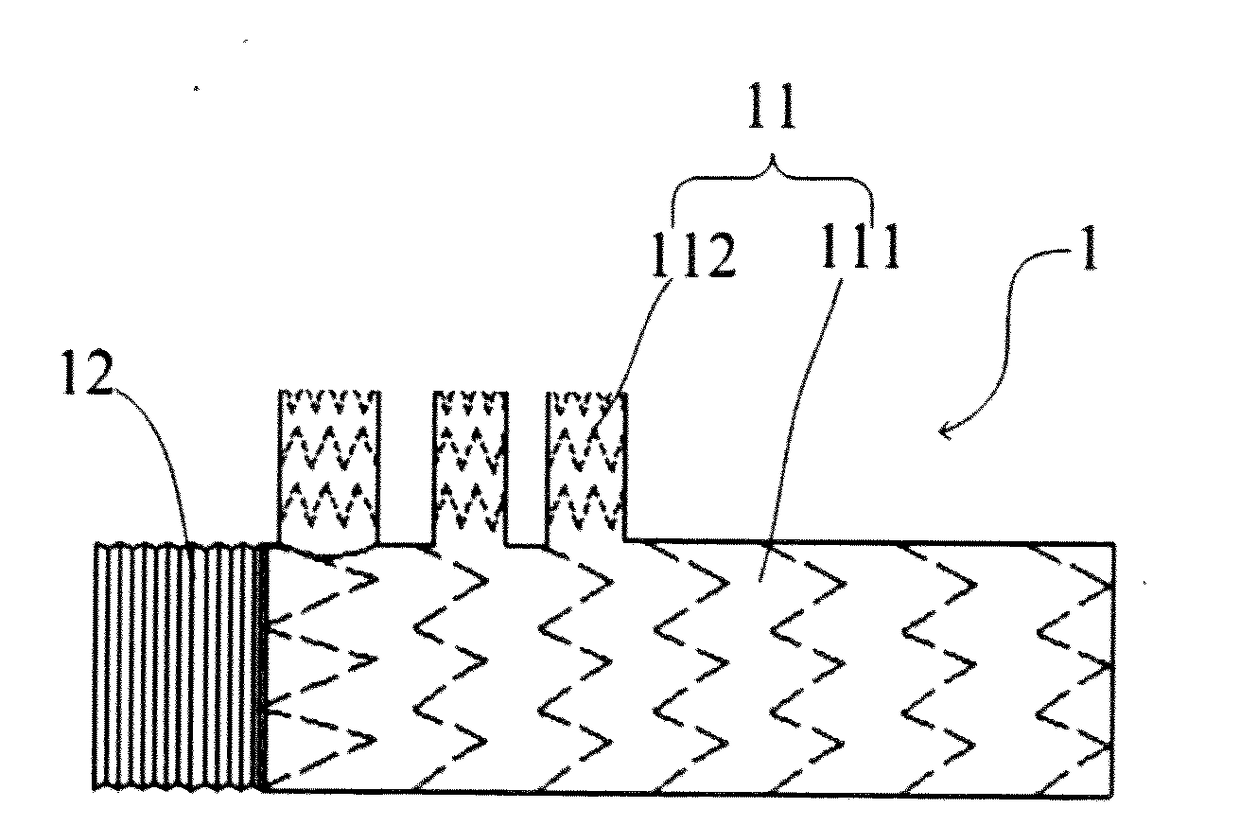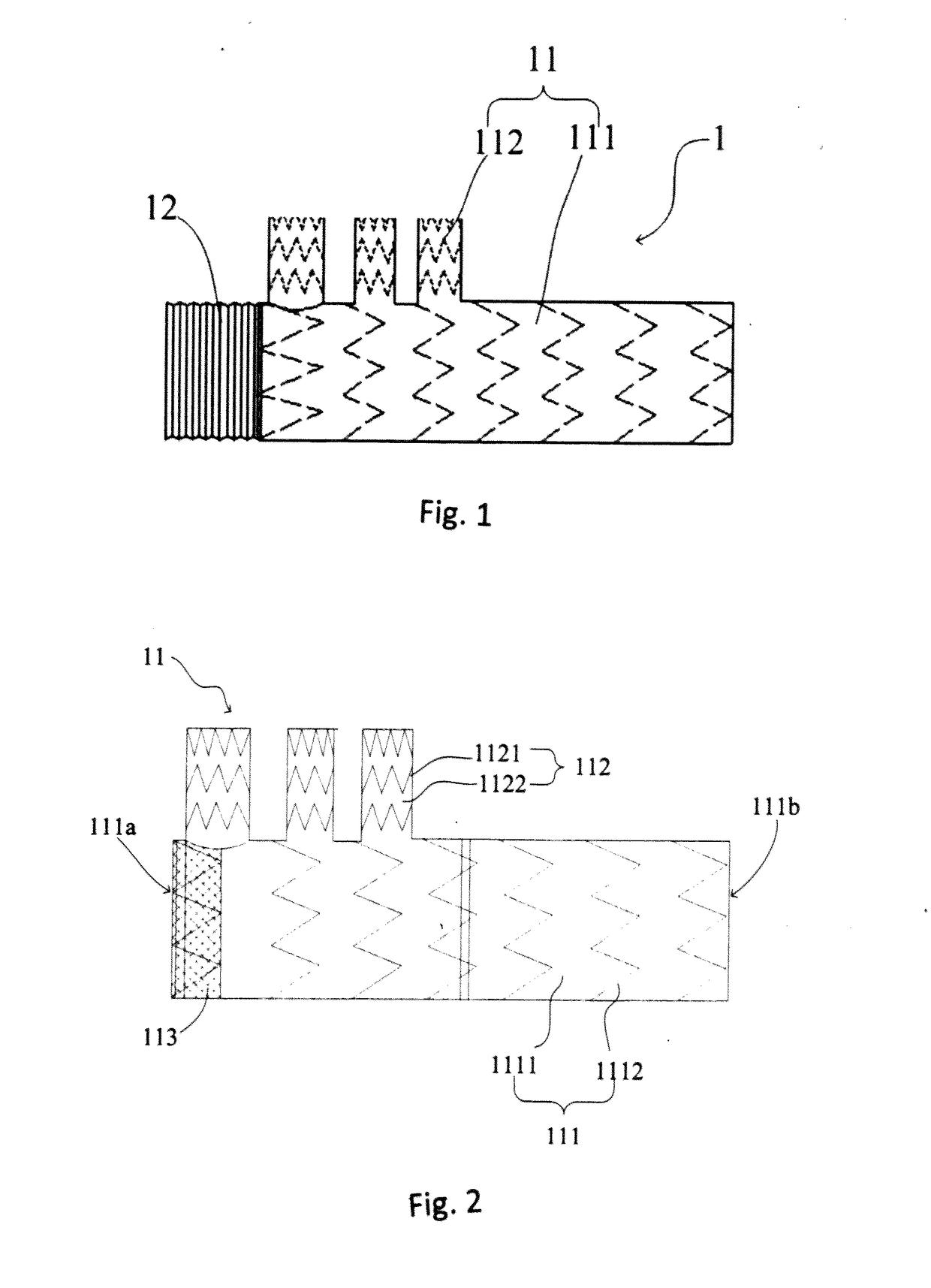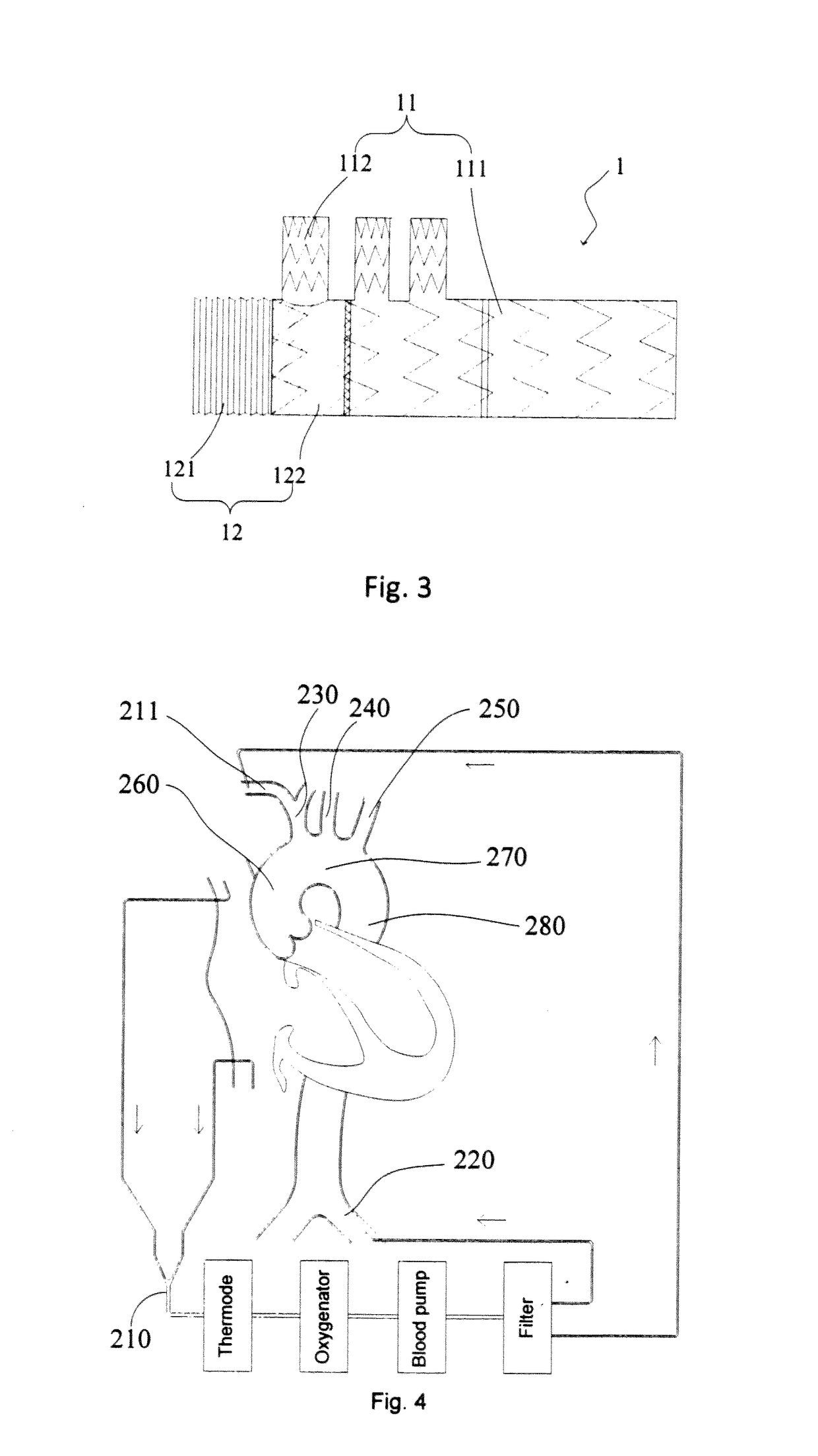Method for Treating Aortic Arch Diseases
a technology for aortic arch and disease, applied in the field of aortic arch disease treatment, can solve the problems of reducing the time of operation and difficulty of operation, serious threats to human health, and difficulty in performing an operation at the aortic arch
- Summary
- Abstract
- Description
- Claims
- Application Information
AI Technical Summary
Benefits of technology
Problems solved by technology
Method used
Image
Examples
Embodiment Construction
[0036]To understand the technical features, objectives and effects of the present invention more clearly, specific implementations of the present invention will be described in detail with reference to the accompanying drawings. For convenience, in the following description, the distal direction and the proximal direction are defined by a common method in this art. That is, the blood flows from a proximal end to a distal end.
[0037]FIGS. 1-3 show an exemplary intraoperative stent 1 available for a lesion region of an aortic arch. It should be understood that the intraoperative stent 1 is merely illustrative and is not intended to limit the scope of the present invention, as those skilled in the art may utilize the illustrated intraoperative stent 1 to implement the method according to the embodiments of the present invention to treat diseases (e.g., Stanford A aortic dissection) at an aortic arch or utilize any other suitable stent to implement the method according to the embodiments...
PUM
 Login to View More
Login to View More Abstract
Description
Claims
Application Information
 Login to View More
Login to View More - R&D
- Intellectual Property
- Life Sciences
- Materials
- Tech Scout
- Unparalleled Data Quality
- Higher Quality Content
- 60% Fewer Hallucinations
Browse by: Latest US Patents, China's latest patents, Technical Efficacy Thesaurus, Application Domain, Technology Topic, Popular Technical Reports.
© 2025 PatSnap. All rights reserved.Legal|Privacy policy|Modern Slavery Act Transparency Statement|Sitemap|About US| Contact US: help@patsnap.com



